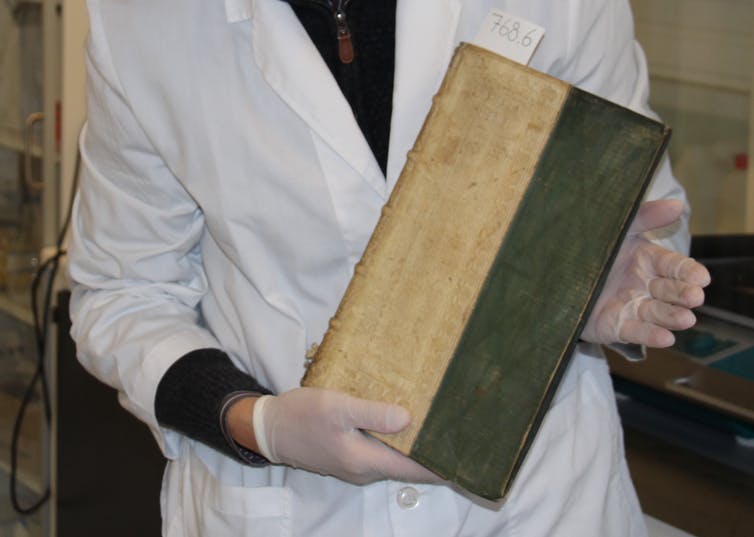Books That Kill: 3 Poisonous Renaissance Manuscripts Discovered in School Library

If you plan on doing lots of summer reading this year, be sure to keep the safety basics in mind: Always keep your page-turning fingers hydrated; never enter an unfamiliar fictional world without a compass; and — most important — watch out for poisonous books.
Odd as it may sound, works on paper can actually be toxic — even deadly — if they're colored with the wrong pigments. A team of researchers at the University of Southern Denmark (SDU) recently rediscovered this peculiar bane of bibliophiles when they pulled three Renaissance-era manuscripts from the school library's rare-book collection, put them under an X-ray microscope and found themselves face-to-face with glowing green arsenic.
"We took these three rare books to the X-ray lab because the library had previously discovered that medieval manuscript fragments, such as copies of Roman law and canonical law, were used to make their covers, Jakob Povl Holck, a research librarian at SDU, and Kaare Lund Rasmussen, an associate professor in physics, chemistry and pharmacy, wrote in The Conversation. "It is well documented that European bookbinders in the 16th and 17th centuries used to recycle older parchments." [19 of the World's Oldest Photos Reveal a Rare Side of History]
The problem was, all three book covers were caked in an "extensive layer" of green paint that made reading the underlying text impossible with the naked eye. So, Holck and Rasmussen used a technique called micro X-ray fluorescence to shine a pinhole-thin beam of light onto the manuscripts, hoping to highlight specific elements (like calcium or iron) baked into the underlying ink. Instead, they found arsenic.
Arsenic is a natural metalloid element found all over Earth's crust — however, when combined with other elements like hydrogen and oxygen, it becomes deadly poisonous. "This chemical element is among the most toxic substances in the world and exposure may lead to various symptoms of poisoning, the development of cancer and even death," Holck and Rasmussen wrote. "The toxicity of arsenic does not diminish with time."
Arsenic poisoning occurs primarily through ingestion (say, by licking one's finger and turning the page of a contaminated book) but some of the poison can also seep in through touch and inhalation. Because it's both tasteless and odorless, arsenic has been used as a poison for thousands of years, the researchers wrote. Despite its deadly reputation, arsenic was briefly considered safe to use as a pigment and dye during parts of the 19th century, so long as it wasn't ingested. This attitude resulted in the unwitting production of poisonous wallpaper, postage stamps, formal dresses and paint pigments that literally made art drop-dead gorgeous.
According to Holck and Rasmussen, the green arsenic-loaded pigment on the three rare book covers is likely a popular, mass-produced Victorian pigment called Paris Green.
Sign up for the Live Science daily newsletter now
Get the world’s most fascinating discoveries delivered straight to your inbox.

"Impressionist and post-impressionist painters used different versions of the pigment to create their vivid masterpieces," the researchers wrote. "This means that many museum pieces today contain the poison."
Because the Paris Green pigment just serves as an undercoat on these three book covers, it probably wasn't applied for aesthetic purposes, the researchers said. Rather, it's more likely that the arsenic paint was slathered onto the rare books in the 19th century as a sort of emerald-green pesticide to keep insects and other vermin away from the precious old pages, Holck and Rasmussen wrote.
The three toxic page-turners are now being stored in separate, ventilated cabinets in the SDU library, the researchers said. The books will soon be digitized so that future researchers can plumb their ancient secrets without succumbing to that most bittersweet book-lover's fate: death by reading.
Originally published on Live Science.

Brandon is the space/physics editor at Live Science. His writing has appeared in The Washington Post, Reader's Digest, CBS.com, the Richard Dawkins Foundation website and other outlets. He holds a bachelor's degree in creative writing from the University of Arizona, with minors in journalism and media arts. He enjoys writing most about space, geoscience and the mysteries of the universe.










